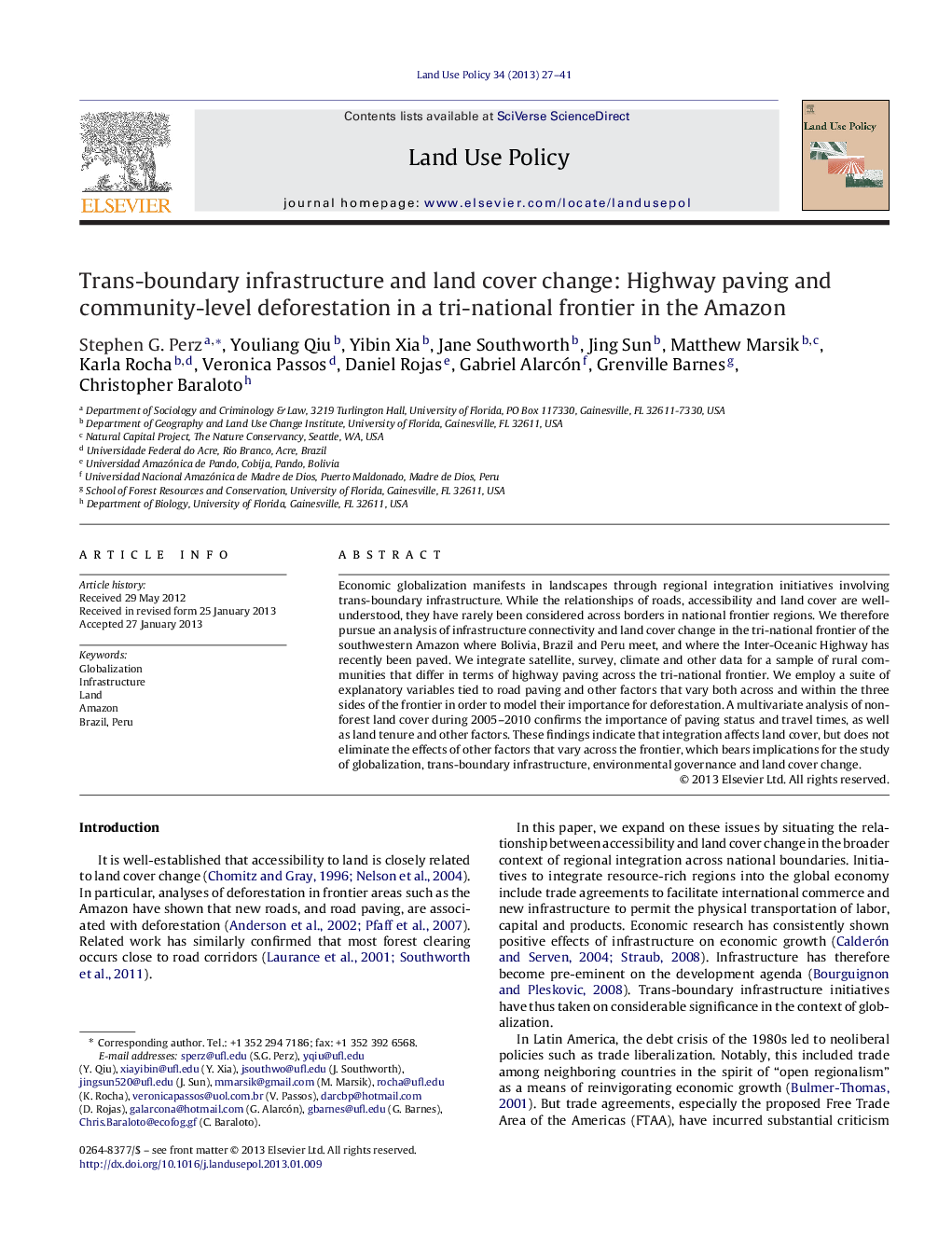| کد مقاله | کد نشریه | سال انتشار | مقاله انگلیسی | نسخه تمام متن |
|---|---|---|---|---|
| 93202 | 160117 | 2013 | 15 صفحه PDF | دانلود رایگان |
Economic globalization manifests in landscapes through regional integration initiatives involving trans-boundary infrastructure. While the relationships of roads, accessibility and land cover are well-understood, they have rarely been considered across borders in national frontier regions. We therefore pursue an analysis of infrastructure connectivity and land cover change in the tri-national frontier of the southwestern Amazon where Bolivia, Brazil and Peru meet, and where the Inter-Oceanic Highway has recently been paved. We integrate satellite, survey, climate and other data for a sample of rural communities that differ in terms of highway paving across the tri-national frontier. We employ a suite of explanatory variables tied to road paving and other factors that vary both across and within the three sides of the frontier in order to model their importance for deforestation. A multivariate analysis of non-forest land cover during 2005–2010 confirms the importance of paving status and travel times, as well as land tenure and other factors. These findings indicate that integration affects land cover, but does not eliminate the effects of other factors that vary across the frontier, which bears implications for the study of globalization, trans-boundary infrastructure, environmental governance and land cover change.
► We integrate biophysical and socioeconomic data across a tri-national frontier.
► Multivariate models estimate the impact of highway paving on land cover change.
► Paving status and travel time exert strong effects on deforestation across borders.
► Land tenure and government assistance also affect deforestation.
► Trans-boundary infrastructure affects land cover across national frontiers.
Journal: Land Use Policy - Volume 34, September 2013, Pages 27–41
